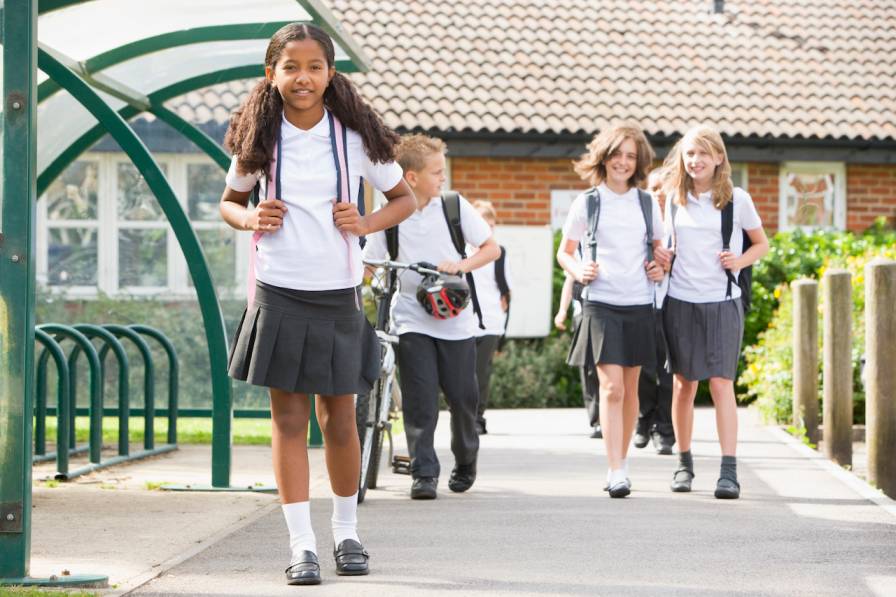Transition from Primary to Secondary School
The move from primary school to secondary school can be a very difficult time for children and young people, in particular for those with special educational needs. There are a number of techniques that can be used to ease that transition. Educational psychologists are often asked for advice to aid a smooth and successful transition.

Transition Principles
1.Maintain collaboration before and after transfer
Evidence shows that collaboration before and after transfer is an important facilitator of effective transfers. DCSF (2008) undertook action research across seven local authorities and 47 primary and secondary maintained schools (including some special schools) to explore what can strengthen transfer and transition practices. The report concludes that effective transfer does not involve one Key Stage ‘doing’ transfer to the next, but an equal partnership that is professionally developed by all stakeholders. Effective strategies could include:
- The establishment of cross-phase (i.e. primary and secondary) working processes within and between children’s services
- Planning schemes of work that promote continuity of curriculum and of teaching and learning styles
- The facilitation and support of local cross-phase networking meetings of families of schools to jointly plan for strengthening transfer
- The planning of bridging units which include joint working between teachers in different Key Stages to promote an understanding of pupils’ abilities and levels of knowledge. The work included within the bridging units should be jointly planned to maximise personalisation
2.Facilitate effective communication
Effective communication between teachers, parents/carers and pupils is one of the most effective practices for improving transition to both primary and secondary school. This could include:
- Exchange of information about personal and social factors
- Visits by teachers to each other’s schools which include lesson observations and discussions of the curriculum to develop greater integration and understanding of each other’s work
- Organising conferences and forums to enable professional dialogue, the dissemination of research findings and the sharing of good practice Establishing clear systems and structures that facilitate collaboration with partner schools
- Involving parents/carers in the preparation for transition and developing their understanding of the culture of the new school and what to expect. This includes promoting and enhancing the role of parent/carer partnerships (e.g. through Parent/Carer Advisers)
- The use of pupil and parent/carer voice systems to monitor and evaluate practice in relation to transfers and transitions
- Providing parents/carers with sufficient information about transition including what will be expected of their children, so they can help them to prepare
- Ensuring that pupils are involved in the transition process at all stages, and are well informed of what to expect in their new school
3.Prioritise and invest in school visits and induction programmes
Particular attention should be paid to the social needs of pupils to help formation of interpersonal relationships. Evidence shows that school visits and induction programmes can improve social and academic outcomes provided they are well planned and resourced
4.Develop practices for particular types of pupils
Evidence suggests that transfer and transition experiences differ for different types of pupils and that different support mechanisms for these pupils can help facilitate effective transfer / transition. Effective practice includes:
- The identification of ‘at risk’ pupils and the implementation of specific activities to understand the issues that they may face during transfer. This could include asking pupils what they expect at a new secondary school, what their concerns are, and what their actions would be if faced by particular problems
- Modifying approaches for pupils with Special Educational Needs (SEN) by consulting educational psychologists (where needed) and planning particular transfer strategies based on informed advice
- Raising the performance of low-attainers at the end of Key Stage 2 through summer schools
- Identifying drops in attainment during transitions and developing strategies to address these at the start of a new school year
5. Evaluate what works and disseminate good practice
Local Authorities’s, Schools and MAT’s can improve the transfer process when they initiate and facilitate good transition and identify and disseminate examples of good practice.
6. Ensure schools have clear roles and responsibilities that are supported by senior management
Effective transition is reliant on a ‘whole school’ approach where school staff have clear roles and responsibilities, senior staff are engaged and the use of progression data is promoted to monitor effectiveness.
